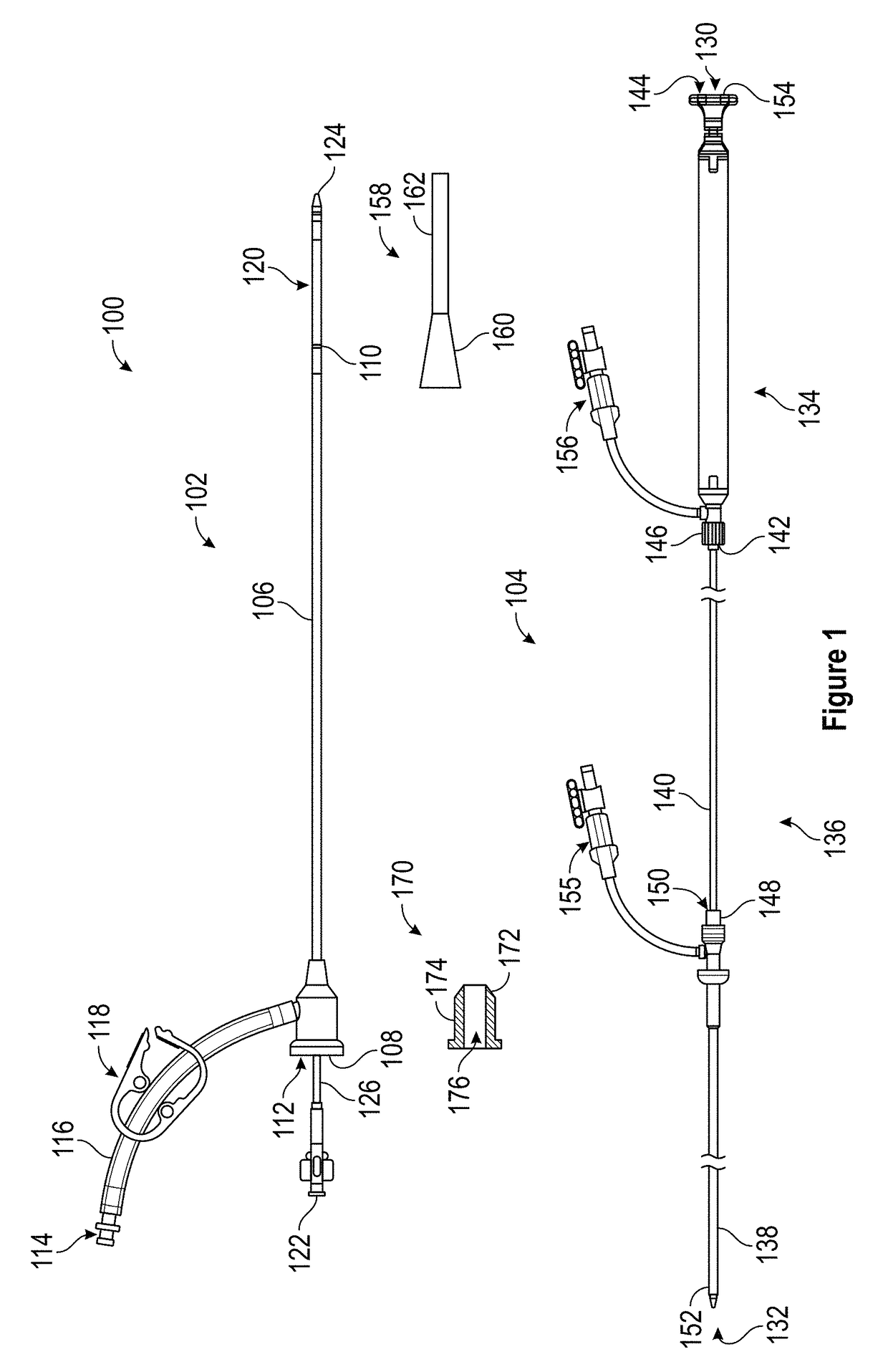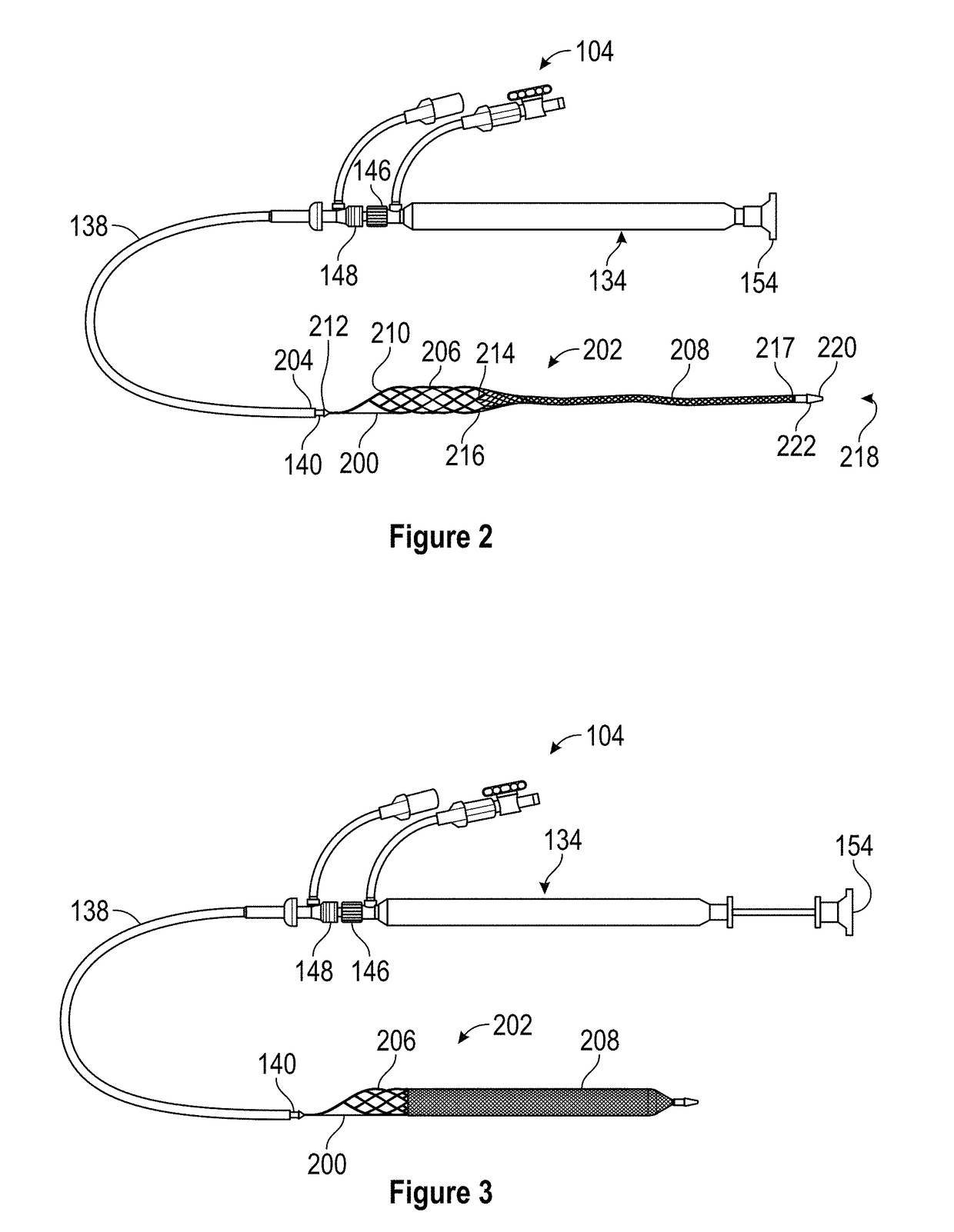Devices and methods for treating vascular occlusion
a technology for vascular occlusion and devices, applied in the field of devices and methods for treating vascular occlusion, can solve the problems of life-threatening pulmonary embolism (pe), increased risk of bleeding, so as to reduce the need for pharmaceuticals, reduce the risk of bleeding, and increase the volume of clots
- Summary
- Abstract
- Description
- Claims
- Application Information
AI Technical Summary
Benefits of technology
Problems solved by technology
Method used
Image
Examples
Embodiment Construction
[0074]The present disclosure relates to a thrombectomy system for removal of a vascular thrombus from a blood vessel of a patient. The thrombectomy system can remove thrombus from a blood vessel, and particularly from a venous vessel of a patient via the coring of the thrombus and / or the separating of the thrombus from the walls of the blood vessel that can occur when the thrombectomy system is retracted through the vascular thrombus. Thrombus that is cored and / or separated from the walls of the blood vessel can be captured within the thrombectomy system and removed from the patient.
[0075]The thrombectomy system can include a thrombus extraction catheter including a Thrombus Extraction Device (“TED”). The TED can include a proximal self-expanding coring element that can be a stent portion and / or that can be formed of a fenestrated structure such as, for example, a unitary fenestrated structure. In some embodiments, the self-expanding coring element can be a semi-rigid structure that...
PUM
 Login to View More
Login to View More Abstract
Description
Claims
Application Information
 Login to View More
Login to View More - R&D
- Intellectual Property
- Life Sciences
- Materials
- Tech Scout
- Unparalleled Data Quality
- Higher Quality Content
- 60% Fewer Hallucinations
Browse by: Latest US Patents, China's latest patents, Technical Efficacy Thesaurus, Application Domain, Technology Topic, Popular Technical Reports.
© 2025 PatSnap. All rights reserved.Legal|Privacy policy|Modern Slavery Act Transparency Statement|Sitemap|About US| Contact US: help@patsnap.com



